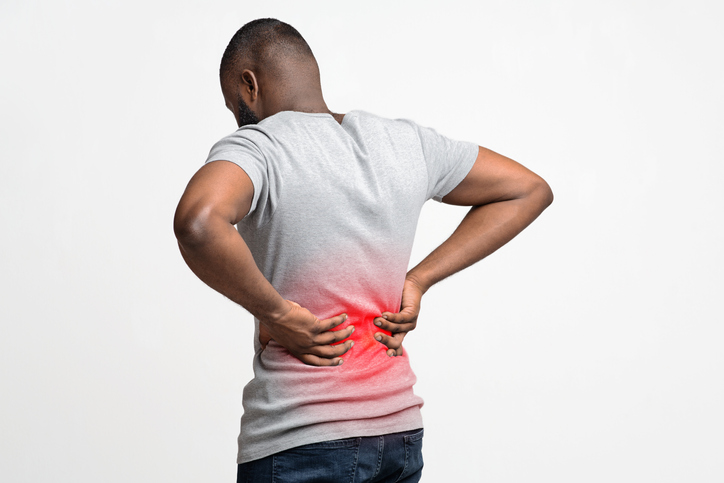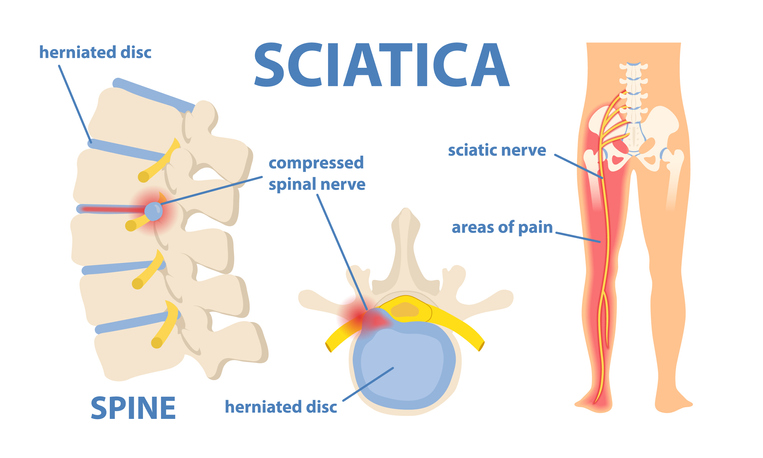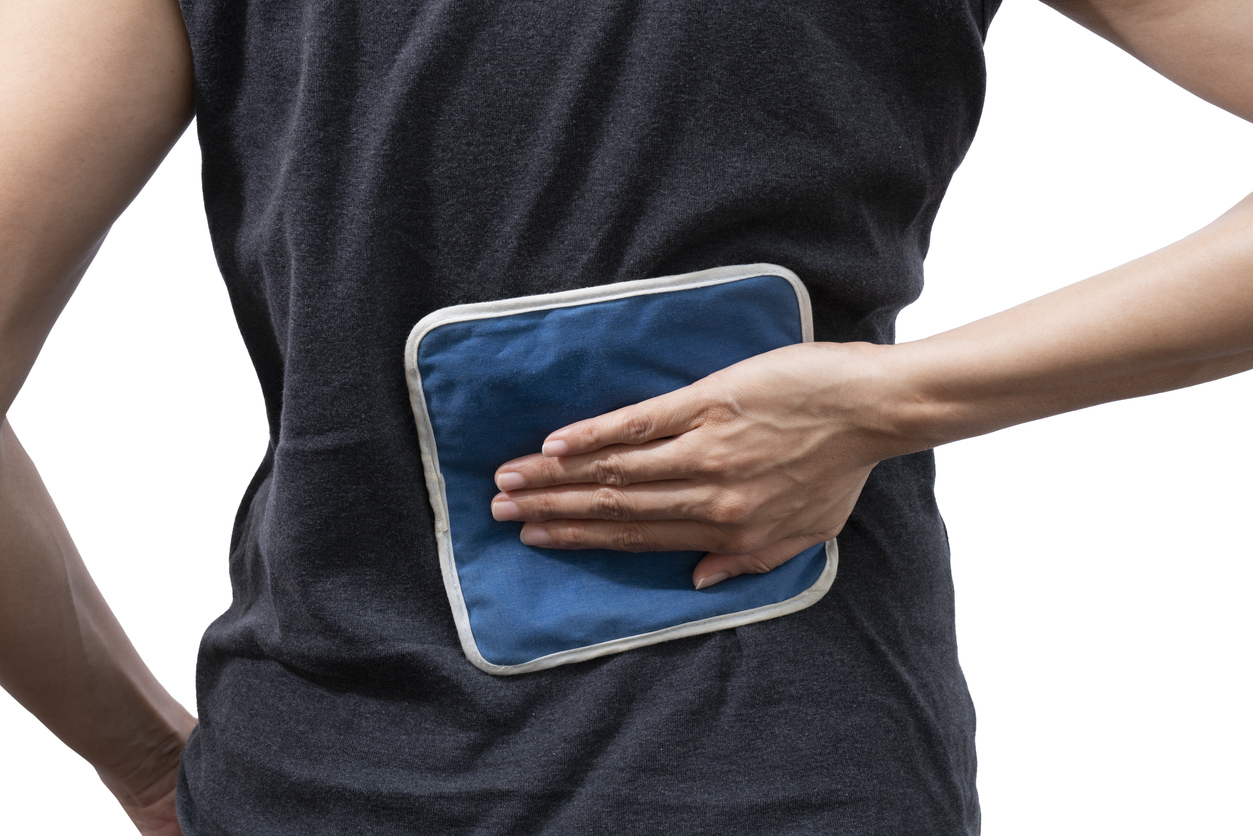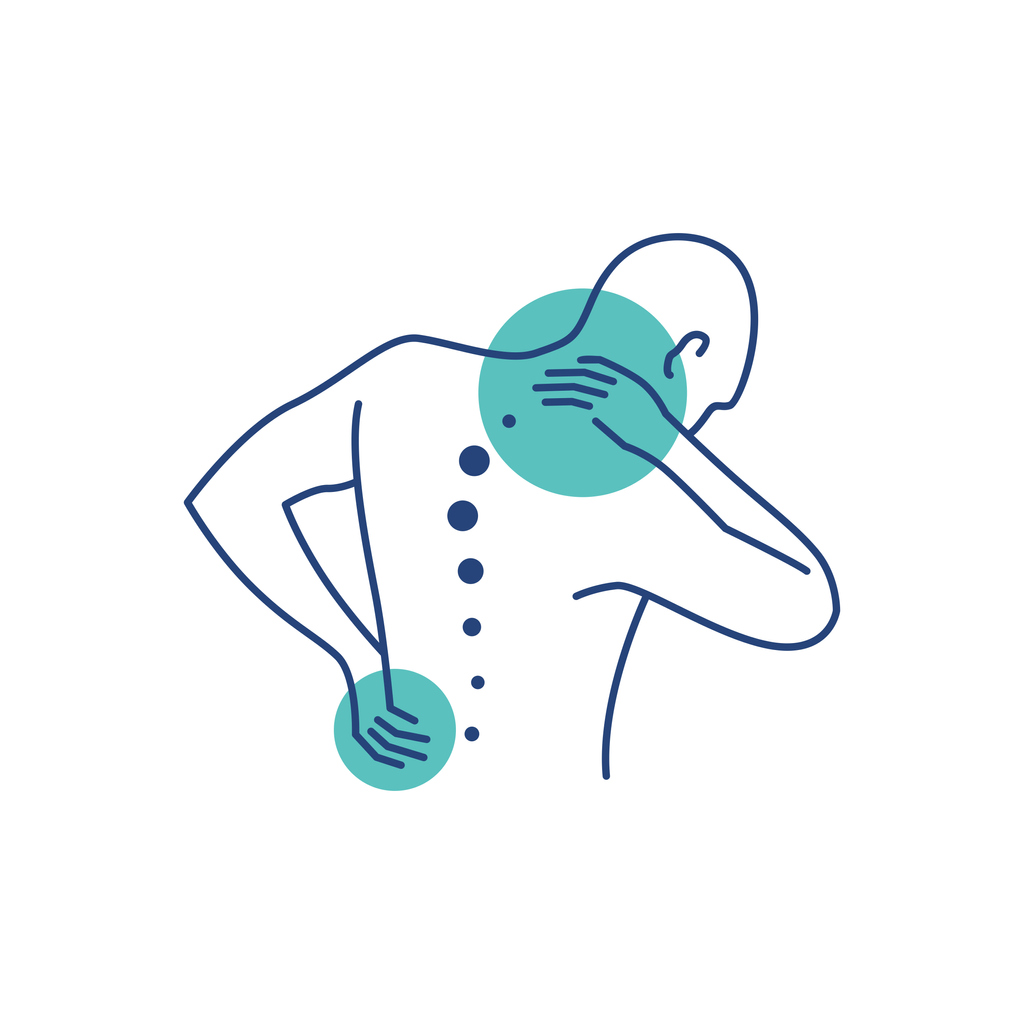Pain
Lumbar Spine Disorders Known for Sciatic Nerve Compression

What is sciatica?
Sciatica, or sciatic nerve pain, refers to pain that occurs when the sciatic nerve root in the lower back becomes compressed, irritated or inflamed. Sciatic nerve pain radiates from the lower back, into the buttocks, and down the legs.
The type of sciatica is dependent upon one or both legs being affected and the duration of symptoms. Sciatica types include acute, chronic, alternating and bilateral. The most common spine disorders that cause sciatic nerve compression include herniated disc, degenerative disc disease, lumbar spinal stenosis, spondylolisthesis, and bone spurs.
Herniated disc
The most common cause of sciatic nerve compression and pain is a herniated disc. A herniated disc (or disk) is also referred to as a slipped or ruptured disc. Spinal discs are rubbery cushions that sit between individual vertebrae. As a disc naturally degenerates with age, the soft jelly-like center of the disc (nucleus) can herniate or tear through the tougher, rubbery exterior (annulus). This can occur at any point of the spine, but the most common location is between the fourth and fifth lumbar vertebrae in the lower back.
Degenerative disc disease
Degenerative disc disease (DDD) is a condition of the spine, in which one or more of the discs between the vertebrae, also known as intervertebral discs, cause neck or back pain. Intervertebral discs are the cushions between the vertebrae; they keep the back pliable and enable the body to bend, twist, and carry weight. Intervertebral discs are mainly composed of water, and as a person ages, the discs dry out, lose their flexibility, elasticity, and the ability to absorb shock. When this causes pain, it is referred to as degenerative disc disease.
Lumbar spinal stenosis
Spinal stenosis is a narrowing of the spinal canal. It occurs when the bony openings within the spine (foramina) begin to narrow, placing pressure on the nerves traveling throughout the spine. This reduced nerve space can occur within the spinal cord or where the spinal nerves exit the spinal canal.
The spine (backbone) runs from the neck to the lower back. The bones of the spine (vertebrae) form the spinal canal, which houses the spinal cord and nerves. If a spinal nerve or the spinal cord becomes compressed, pain, numbness, muscle weakness, or tingling may occur. Spinal stenosis most often occurs in the lower back (lumbar stenosis) or neck (cervical stenosis). Spinal stenosis of the upper/middle back (thoracic stenosis) is rare.
Spondylolisthesis
Spondylolisthesis is a medical condition that primarily affects the lower back (lumbar spine); however, it can also occur in the mid to upper back (thoracic spine) or neck (cervical spine). The body has 33 stacked vertebrae that form the foundation of the spine. Spondylolisthesis occurs when a vertebra slips forward (anterolisthesis) or backward (retrolisthesis) onto the vertebra underneath it, which may lead to nerve compression.
Bone spurs
Facet joints are small joints located between each vertebra of the spine. A pair of facet joints are located at the back of each spinal segment. These joints help support the spine and allow for range of motion. If facet joints move too much, the body may produce bone spurs to stop excessive movement. As bone spurs grow, they can compress the spinal nerves. Osteoarthritis, which often occurs due to aging of the spine, can also cause bone spurs that place pressure on the sciatic nerve.

















